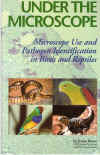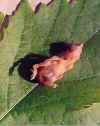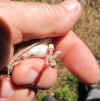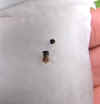
Health and Care
This page has been created to aid in discussion of all problems that bird breeders encounter. Please feel free to submit a question or answer to any of the items listed below.
It is envisaged to automate the posting feature here, but until this can be completed (NT restriction), please e-mail your questions, answers and photographs.
Applications
of antibiotics in various disease conditions
Disease or Disease
Agent
Antibiotic
Route
----------------------------------------------------------------------------------------------
Myccoplasmosis
Erythromycin
Injection
Tetracyclines
Oral/Injection
Spectinomycin
Oral/Injection
Spiramycin
Oral/Injection
Tylosin
Oral/Injection
Ornithosis, psittacosis
Tetracyclines
Oral/Injection
Tylosin
Oral/Injection
Spectinomycin
Injection
Doxycycline
Oral
E. coli septicemia
Spectinomycin or ampicillin
Injection
Tetracyclines
Oral
Furazolidon
Oral
Sulfonamides
Oral
Salmonellosis
Spectinomycin
Injection
Oxytetracycline
Oral/Injection
Furazolidone or Nitrofurazone
Oral
Chloramphenicol
Oral/Injection
Sulfadimidine
Oral
Sulfadiazine +
Trimethoprim
Oral
Pasteurellosis
Spectinomycin
Oral/Injection
Sulfonamides
Oral
Erysipelas
Penicillins
Oral/Injection
Tetracyclines
Oral
Streptococcal
infections,
staphylococcosis
Penicillins
Oral/Injection
Furazolidone
Oral
Tetracyclines
Oral
Pseudomonas infections
Gentamicin or Polymyxin
Oral/Injection
Tobramycin
Oral/Injection
Pseudotuberculosis Tetracyclines Oral/Injection
Candidiasis
Nystatin
Oral
Aspergillosis Amphotericin or miconazole Oral/Injection
Favus Griseofulvin or miconazole Topical
Skin
mycoses
Griseofulvin
powder
Topical
Miconazole
powder
Topical
Septicemia
Spectinomycin and other
similarly acting
antibiotics
Injection
Urinary tract infection Tetracyclines Oral
Eye infection Oxytetracycline aqueous drops Topical
Upper respiratory tract
infection
Spectinomycin + Lincomycin
Oral
Tetracyclines
Oral
Internal tract
infection
Sulfadimidine
Oral
Sulfadiazine +
Trimethoprim
Oral
Lincomycin
Oral
Chloramphenicol
Oral
Wound
infection
Oxytetracycline
Topical
Bacitracin spray
powder
Topical
For more information on
Avian Diseases and Medicine see Elisha W. Burr's
book "Diseases of Cage Birds" ISBN 0-8138-0362-4 TFH
Publications
References:
Elisha W. Burr's "Diseases of Cage Birds"
--------------------------------------
Other interesting site on diseases in Pigeons
and Poultry but basically the
same as the diseases effecting finches:
Bird Diseases
http://www.comanco.com/selected.htm
Antibiotics European & Miscellaneous Pigeon Supply
http://www.essentialbird.com/index.php?option=com_content&view=article&id=26:herbal-first-aid-for-birds&catid=1:articles

One
of the "must have" very handy and inexpensive 55 page manual by Dr
Danny Brown on
Microscope Use and Pathogen Identification in Birds and Reptiles available from
the ABK
or the QFS
Question 1:
This bird has developed many black feathers
in its plumage. Is this a disorder or a mutation?
Submitted by: John Quatro Date: 18/7/1998
Occasionally, birds develop partly dark or totally black plumage,
according to Cornell Lab of Ornithology this is because an abnormal amount of dark melanin pigmentation
is produced.
Checkout these links below, on Melanistic and Leucistic Birds
Melanistic and Leucistic Birds
Albino, Leucistic & Melanistic creatures
Question 2:




It looks
as if these birds have some kind of intestinal Bacteria infection many a time Salmonella, Coli or
Candida. Check out the links
bellow
Digestive Disorders of Pet Birds
Question 3:

The young Red Siskin with bent feet has died
from "Rickets". Could Rickets be cured at this stage, the bird looked perfectly
healthy?
Malnourishment is often associated with rickets, the primary cause of rickets is a vitamin D, and calcium and phosphate deficiency. See the links below on Rickets:
Metabolic Bone Disorder: Rickets
Question 4:
Feet
disorders
There are many
reasons why would a bird have sore toe or a foot, more often it's scaly feet, mosquito
bite or a broken toe, check out the links below:
This is the reason why not to give either wild or captive birds synthetic materials to use for nest building. This is a wild European Blackbird I caught after noticing at the feeder something was wrong with its feet. I managed to cut and pull all of the string out. I cleaned, washed, disinfected and applied some ointment on its feet and released the bird. If it survives the first couple of days then I believe its feet will gradually get back to normal despite losing the rear and the inner toe on one leg.
----------------------------
One
of the wild doves at the bird feeder I noticed was limping had abnormally red
feet. I suspected Gout but could be some kind of external skin infection. I
washed the feet with liquid iodine then applied Lamisile Cream (Terbinafine
Hydrochloride 10 mg/g) hoping it will do the trick. Check this out:
http://www.2ndchance.info/gout.htm
Question 5:
Scaly mites can also
infest the area around the eyes or mandibles as in this bird.
This is caused by small mites and
their continuous burrowing activities: side of the beak, head, skin of the eyelids,
ventral region and feet are usually effected. The only birds in my aviaries that I had to
treat occasionally were Chaffinches and Goldfinches, fortunately this is easily treated
with various preparations like: Liquid Paraffin, dissolved Condys Crystals, any Mineral
oil, etc. simply by brushing onto the effected area. Some more expensive medication like
Ivomectin will also do the job. About three to four applications are necessary, one every
three days. I
soak their feet in warm water for about two minutes then wash
their feet with soap, soak for another few minutes to soften the skin, pour some disinfectant then cut all the
dead skin with small scissors, disinfect the feet again then apply Liquid Paraffin or
Petroleum gel. If this condition is left untreated for to long it will cut off blood
circulation resulting in loss of toes, or feet. By applying these ointments we
only suffocate those burrowing mites who are on the bird but their environment also needs
to be looked at. Perches, walls, food and water dishes, cages, floors etc. should also be
cleaned and disinfected. If the birds are kept indoors, good air circulation is required.
Question 6:
This bird has lost its upper and lower mandible. What do I do?
Submitted by: John
Quatro Date: 18/7/1998
Firstly see an Avian Veterinarian. The bird must have had some kind of nutritional deficiency together with fungal or bacterial infection. Chaffinches need lots of live food, if you can't supply live food why do you keep these birds? Give him good quality soft food and some live food, most likely he would not be able to feed on seeds, but I would talk to an Avian Veterinarian.
Question 7:
I have this Lined Seedeater with a lump on its head (probably a tumor) could it be removed? Please can you help?
For this
it is best to see qualified avian veterinarian, see the links below.
Cancers-lumps-hernias
Avian Pox
Question 8:



Lipoma cyst in
young Hooded Siskin
Question 9:
I had young birds with inflated side of the neck before but never as bad as this guy, he eventually died the same day I found him.
Check out the link about a week old pigeon with Ruptured Air Sack
http://www.wildbirdrehabhaven.org/Information/faq.html
http://www.cockatielcottage.net/feeding.html
http://www.worldpoultry.net/Breeders/General/2009/11/Rising-pressure-from-air-sacculitis-WP006961W/
Question 10:
One of my young Red Siskins has died
for no apparent reason its crop was still full. What could have caused it?
If it's not Bacterial Infection or exposure to cold environment it's probably
Fungal infection. Young with fungal infection often die with full crop. Just
by looking at the bird you should have some idea what it was but the best
option is to see your Avian Vet.
Aspergillus infection of the digestive system of young birds will result in nesting diarrhea of gummy consistency which often fouls the feathers and plugs the vent, the chicks are listless, feathers fluffed up, head drawn back and eyes closed. Aspergillosis will kill the young birds in the nest but not necessarily effect the parent birds. Young birds are often found dead with their crops full.
For more info check out the links below:
Mycoses and Mycotoxicoses Aspergillosis
Question 11:
My bird has conjunctivitis what do I do?
Comment: I have a wild finch that appears to have some sort of conjunctivitis.
It's vision is very limited. How can I help it? I have a cage ready to
go...just in case I see it again. Thank you.
Some of the wild finches in the USA have been infected with some rare form
of clamidia. Scientists have examined birds from all over the USA where the
birds with this condition were being reported. Although they know what it is
and how to treat it, what they do not know is where and how that many birds
got infected. It is mainly House finches and an occasional Goldfinch. I think
you should contact Cornell Laboratory of Ornithology www.ornith.cornell.edu
they will be able to tell you exactly what to do if you see these birds
again.
Question 12:
My bird is all fluffed up, I noticed a dark inflammation on the side of its tummy. Please help!
6 main causes of erosions in gizzard and proventriculus
Question 13:
I left four young Siskins in a small cage one Sunday morning out in the sun , when I came back only three were in the cage, I found the head of the fourth about 2 feet away. I suspect a large black and white cat. I would like to catch him, What do I do?
Why do you
want to catch the cat, or should I
ask? Cat are sometimes good to have around the house, they control mice
population around the aviaries.
Submitted by: Date:
Question 14:
One of my birds has yellowish skin in the corner of its bill. Definitely not Canker
See the Scaly Face photos above.


It only takes 6
hours if the conditions are right for mould to start growing on Fruit,
Soft food and Sprouted seeds.


Sprouted seeds
are only second to unclean water dish for
spreading disease in
Aviaries. This mould grew in only 48 hours. There is a golden rule we all must
remember
and this is to never leave Soft food, fruit or sprouted seeds over night in
Aviaries.

This is the seed
I kept for planting, by zooming in with a camera I discovered they were moldy.
Shouldn't be fed to birds!
Question 16:
My Red Siskins have molted
or are molting (I am not sure). The males have lost all their head feathers, some of them
have swollen eyebrow (one side only) and the eye is totally
closed. They look
in a very bad condition,
all the females are OK. What should I do and what should I give them?
This
usually happens to birds kept indoors, I also occasionally see this in my
birds. To treat this I take the bird outside and leave it in an outdoor aviary
for about three months and it always clears up. I believe, it must be some
kind of fungal skin infection or an allergy. I even at times wash the bird using medicated
shampoo, dry it well before leaving it in an outdoor aviary. One think is for
certain, they do benefit from good air circulation, exposure to a direct
sunlight, sand bathe, clean water provided daily to bathe in etc. I am not aware of
any other proven treatments for birds but there could be, it is best to
consult your veterinarian. If it's mites that are causing it, you would know
it, believe me! Another possibility is if the male is to aggressive or if kept
with other birds that are nesting, the females will cause this to each other,
often bolting out of the nest attacking any bird in the vicinity of their
nest, flying away with beak full of feathers.
Question 17:
Psittacosis


Oriental Greenfinch with Psittacosis
Oriental Greenfinch 35 day later


Paited Bunting with Chlamydia infection
Note: the lump above the eye is pushing the lid upwards
Dear John ,
A friend of mine, who is also fond of
Siskins gave me your address and I have seen your just fantastic page! Since I was
a boy in my hometown in the State of Minas Gerais, interior of Brazil my hobby was
bird keeping. I have always been fascinated by the Siskins and, in those days, I only knew
the black hooded ones. In l974 I moved to Brasilia and here I had the chance of knowing
other breeds, like the yarelli , the psaltria, the carduelis and
others. For my surprise and mainly by watching your page, I know now that there are lots
of Siskins I had never imagined they could exist. What is amazing to me is the fact that
Australia and New Zealand are the only places in the world where there are no wild
Siskins. So, how did you know of all these different species birds? I realize it might
have been a real big job acquiring so many different kinds of Siskins, right? If you
accidentally turn loose a pair of Siskins, for example a pair of Spinus magellanicus
ictericus, would they survive and reproduce there in Australia?
Congratulation for your page! Best wishes from Venceslau/Planaltina-DF/Brasil
Submitted by:
Venceslau Barbosa email=lau@yawl.com.br
From:
Date:2 December 1998
I have also kept birds since I was a kid, my passion was
pigeons
but somehow I got stumbled into keeping Carduelan species. I guess it was the
variety of colors and the song that I was attracted to. It was only through reading books and
research that I learned about the species and subspecies of Siskins and I can proudly say
that before the "International Carduelan society" (1997) they were never listed in one
book, and this is not only with Siskins, there are many other species and subspecies
of birds that people simply do not know about and some are just hanging in existence.
I still haven't completed what I wanted to achieve and this is to have photos of
all the Siskin species and subspecies published on the ICS web page. There's
only a hand-full of photographs of subspecies that I need to accomplish this,
which up to now were difficult to obtain. Here
in Australia we only have about five species of Siskins, and strange as it may
be breeders are not interested in Carduelan
species as they are in the estrildids and even less in New Zealand but somehow we manage to maintain a few pure
specimens in our country.
The comment about: would the birds survive if been
accidentally released; that depends on how many and on the species of birds. The birds
will go through the same amount of stress as when the wild birds are caught for bird
trade, often 5% or less will only survive before they reach the bird shops, the diet and
the environment is completely different to what they are use to, and not to
mention the predators and the territorial fights with the local birds. According to the book
"Introduced birds of the World" most European finches were introduced into
Australia and New Zealand but only some were able to establish, European Goldfinches and
Greenfinches are trapped by thousands for supply to bird trade and export, Birds like
Bullfinches have died out, the Australian climate is most certainly not suitable for them,
migratory birds like Redpolls and Linnets have probably found their way to the Northern
hemisphere. However, most of these birds have managed to establish in New Zealand
where the climate is similar to the climate in Northern hemisphere. Intentionally
releasing foreign birds into the wild is illegal and should never be done not only
here in Australia but I believe in all countries of the world. Respecting native species
and their environment is the way to go. Native species and their environment is
every country's national treasure, we should all be proud of it and enjoy it
while we still can.
Question 19:

This young Hooded Siskin is a victim
of a continues attack by a large European Greenfinch, with an abscess on its preening
gland.
Question 20:

Swollen Joints could
be an injury or caused by Paratyphoid

Swollen joints

After the
swollen joints dry up (from the pus formed around the joints) the wing will
drop a little, it will never go back to normal. If the both wings are effected
the bird will probably never fly again.
Veterinary Practice News
- ARS Develops Bovine TB Test for Birds
http://www.animalnetwork.com/petindustry/vpn/newsarticleview.asp?Section=Exotics+News&RecordNo=4231
Question:29
Coccidia
http://www.agric.gov.ab.ca/agdex/600/63-35.html
What to you use to control coccidia ? The name of medicine and
dosage?
There are many medication that will control
Coccidia, every company has their own formula but one of the latest and probably
the best is the Baycox. Dosage is 2ml/L of water , usually it is two to three
day treatment or until
cleared.
Twirling
Comment: One
of the birds is constantly turning its head up. Is it possible to cure birds
with this symptoms?
This sounds like the symptoms breeders refer to as twirling. I can
only voice my opinion from my experience mainly through reading and keeping
birds. In 95% of cases twirling is an infection of the vestibular organ in the
inner ear in some cases it is fungal and in some bacterial infection but
it also could be viral, parasitic or toxic. Tumors or lesions of some kind or
a good nock on the head could also have the same symptoms. Although Veterinarians and some Aviculturists claim that there is a
cure for twirling, it is easier to lose the sick birds (especially
finches) then actually curing them. Veterinary Science is improving daily and
hopefully soon quick and accurate diagnosis will be possible. Over 20 year period I had three birds with twirling
symptoms, I tried everything possible but every time the bird died. In my opinion if the birds were given
proper care, environment and diet head twisting would be unheard-off. Never
ever keep too many birds in a cage or an Aviary.
What is too many? --- More then one breeding pair or more than four young, if
kept in a cage.
HOSPITAL CAGE
It is
important that all heated hospital cages have good air circulation, I find that
a cheap computer fans that are available from about $4 each at any computer
market are perfect for this job. Air should never be pumped into the cage, air
should be sucked out of the cage and two small 25mm (1 inch) square fans are
just about the right size for a 700mm x 300mm x 600mm hospital box.
Check this out - http://msucares.com/poultry/diseases/solutions.html
Question:32
Let's call them "Laurel and Hardy"


Photos taken on the 12/12/02,
the chicks are about 10 days old, hatched one day apart.




Trimming an overgrown upper mandible
Question:33





A little bit of TLC and 'look at me now' (About 6
months later)
European Goldfinch with
overgrown bill, both the upper and lower mandibles are
evenly overgrown and had to be trimmed on regular basis. In most cases it is
either the upper or the lower mandible that need trimming. Birds in this
condition cannot feed properly and often die from starvation. I found this bird
in a bird-shop, it was in poor condition. This bird (male) recoverd well and now it
looks like a normal Euro. Goldfinch.
(No it is not C.c parapanisi)
Egg binding
The most common cause of egg binding is lack of calcium in the diet. When I walked into an aviary in which I kept a pair of Hooded Siskins, I saw the female sitting on the perch breathing heavily. The first thought was that it must have had some nasty infection from eating something bad, like paint, lead etc. I looked at the abdomen, it was swollen, I wasn't suspecting egg binding, so I refilled the water dish to which I added "Triple C". I gave the birds three drops directly into the beak and walked out. I returned in about an hour and the bird wasn't much better so I gave her another couple of drops of medicated water thinking 'this bird is a goner'. The following morning I found the bird perfectly normal, flying from perch to perch, assuming 'whatever it was the medicine must have done the trick'. As I was walking out of the aviary I saw something white on the floor that looked like an egg, I picked it up and yes that was a soft shelled egg that I haven seen for quite some time in my aviaries.
Question:3
6The first two weeks Now he spends all day foraging for insects and playing with his tennis ball.
Question:3
7Toxic Cocktail

Question:40


Young
Grass finch, with face disfigured and crossed mandibles,
and a normal Grass finch.
It is not clear what caused it, if it's proven to be genetic then the parents
should be separated. If it happens again and if
it's proven that one of the parents did this then
that bird should be replaced. Then again, it could have been accidental
at hatching, an insect or another aviary bird could have done it, etc. This bird
died soon after fledging.
Question:4
1Sometimes cotton wool results in this, when the parents are too quick in starting another nest and are carrying both the nesting material and the food for the young in their beaks. This guy is lucky I was able to (very carefully) pull out every bit of it from deep inside its stomach. White-winged Wrens are worth their weight in gold!

Question:4
2Question:4
3Question:44




Blue-faced
Parrotfinch female after laying continuously for 2
years
ended up with this, probably hernia. I moved the bird into a holding aviary, she
eventually recovered. First photo taken on the
20/Aug/12, second on 25/Aug/12 the third
on the 15/Sep/12 and the last on the 16/Mar/13
Question:45



Male Red-backed
Wren fighting through the wire with the
White-winged Wren
ended up losing part of its rear toe, he recovered and produce 4 young
the
same year he was hatched.
Question:48
![]()
| Home | Discussion Page | Ask the Doc! | Carduelan Breeders | Siskins of the World |
| Video Album | Photo Album | Book Review | View Guestbook | Sign Guestbook |
![]()